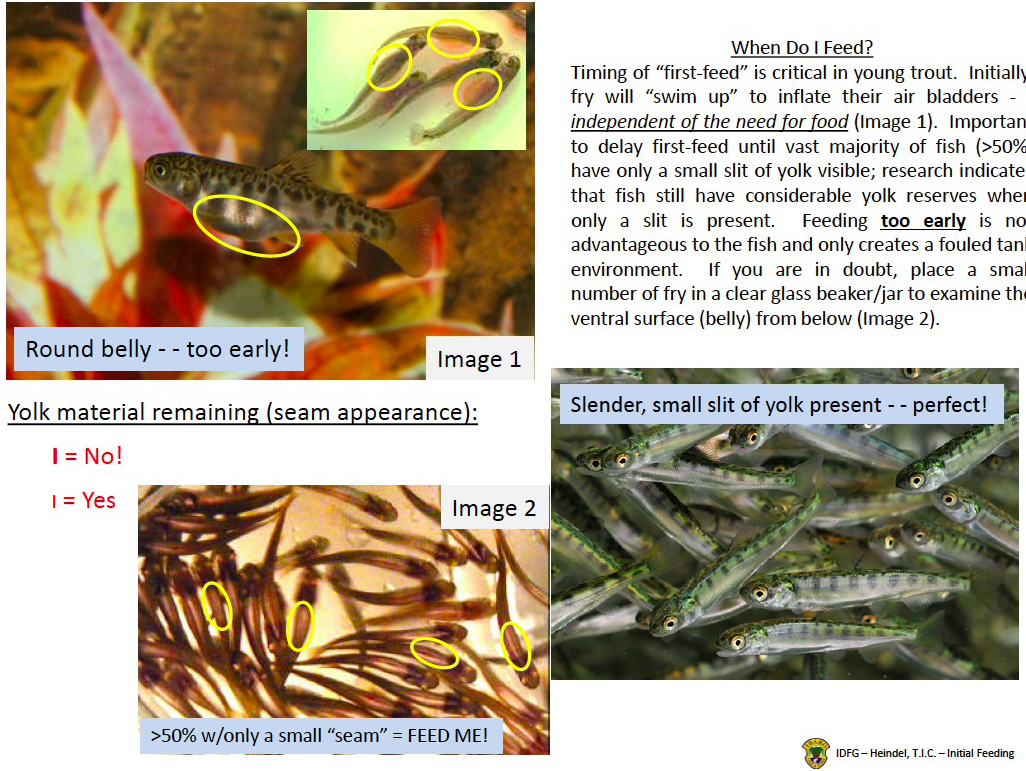MANAGING SWIM-UP AND DI
In this and related pages, I’ll discuss two methods for predicting or controlling when alevin reach the swim-up stage. A third entry will discuss breeder basket redesign and how to keep the breeder basket clean.
Introduction
“Swim-up” is a stage that occurs when alevin become fully developed (when they’re called fry). Prior to that point, alevin have been living on the bottom of the breeder basket, but when they approach being 85 or 90% developed, they start making tentative movements towards the surface. Experienced fisheries biologists like Roxbury hatchery’s Jeremy Whalen can recognize the fairly subtle cues that indicate the alevin have reached the swim-up stage. But TIC teachers and volunteers, who observe only a comparatively small number of alevin and who raise trout just once a year, usually find it very difficult to spot the telltale signs of the swim-up stage. As a result, we need to use data to predict when alevin will swim up.
And for this, we’ve created a data entry sheet and a special “swim-up calculator,” which you can find here. Two quick notes about the Excel and Google Sheets files contained in this folder:
- One is an Excel workbook called “Temp and DI record and swim-up calculator”; another is a Google Sheets workbook of the same name. Both contain four worksheets. The first provides instructions, the second is used to PREDICTswim-up and to record water temperature data, the third will allow you to SCHEDULE or CONTROL when the fry swim up, and the fourth you won’t need to use; it simply allows a formula to perform a “lookup” function.
- If you’re going to use the Excel workbook, in order for the formulas to work, you need to open the Excel file, not be looking at the file from within a Web browser such as Chrome. Download the spreadsheet and save it to your hard drive. (If you don’t have Excel, use the Google Sheets document.)
- The other two files are Excel and Google Sheets spreadsheets that you should use for recording temperature, pH, water chemistry readings, etc. It’s important that you also record egg or fry mortality and other observations such as swim-up behavior.
It’s extremely important to know when your fry are approaching 85 or 90% development (DI = 85) because that’s when the fry should be swimming up and looking for food. But the swim-up stage lasts only a few days–it’s a briefly opened window–and, if you miss it, you’ve missed it, probably for good! So it’s critical to know when to be looking for the telltale signs of the swim-up phase and to be able to spend time watching for those signs–not at Disney World!–so that you can respond to them appropriately.
Finally, to see what the swim-up stage looks like, watch this short video.

